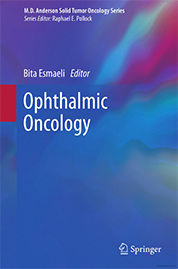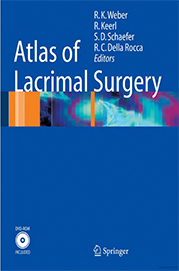Our ophthalmologist, Dr. Syed Ahmad, is one of a limited number of physicians in the country who is trained in both ophthalmology and cosmetic and reconstructive surgery around the eye. One type of cosmetically performed eye surgery is called blepharoplasty, and usually involves the lifting of eyelids and the removal of wrinkles or excess skin around the eyes. Blepharoplasty can reduce the aging, tired or sad look caused by drooping eyelids. Dr. Ahmad also performs reconstructive surgery of the eye socket and orbital fractures of the facial bones.
Surgery around the eyes always requires the consideration of the eye function, and ophthalmologists with dual training like Dr. Ahmad are uniquely qualified to perform such procedures. Common cosmetic and functional problems involving the eyelids and the tissues around the eye can also have underlying neurological or muscle causes and associations, and evaluation necessitates more than just a cosmetic approach. It is a good idea for the patient to be evaluated from the perspective of a cosmetic surgeon, an ophthalmologist, and a specialist experienced in diseases of the orbit (the eye socket, bones, and sinuses).
Some of the common eye conditions which may or may not necessarily require surgery include:
Pterygium
Also known as Surfer’s Eye, this is a common eye condition that affects people who spend a lot of time outdoors. It shows up as a growth of pink, fleshy tissue on the white of the eye. It usually forms on the side closest to the nose.
It is a noncancerous lesion that usually grows slowly throughout life or it may stop growing after a certain point. In rare cases, a pterygium can continue growing until it covers the pupil of the eye and interferes with vision. If it affects both eyes, it is called a bilateral pterygium. It can cause annoying symptoms such as a feeling of a foreign body in the eye.
In some cases, a pterygium can grow onto the cornea (the clear, outer layer of the eye). This can distort the shape of the cornea, causing a condition called astigmatism. The result can be blurred vision.
Symptoms of pterygium may include burning, a gritty feeling, itching, the sensation of a foreign body in the eye or even blurred vision. The condition can be diagnosed by examining the front part of the eye with a microscope. Treatment may range from lubricating eye drops or ointments, or if severe enough to interfere with vision or is causing persistent discomfort, can be surgically removed.
Eye Lesions
These are abnormal tissues on the eye, possibly due to eye trauma or as a symptom of a health problem. Common symptoms of eye lesions include dry or red eyes, pain, and blurred vision that is not improved by up-to-date corrective lenses. Eye lesions are typically not visible without having a professional ophthalmologist dilate the eye, but lesions can gradually grow in size, becoming more noticeable, irritating, and if not treated, blinding. Some eye lesions possess cancerous qualities, but the majority are benign.
Lesions can result from severe trauma to the eye such as penetration by a sharp object. A lesion, however, can also result from even minor trauma such as being hit by a fast-moving ball during sports practice or having a car’s airbag deploy near the face. In all scenarios, it is important to see a doctor to assess the damage and determine what should be done, if anything.
Lesions can also appear as a symptom of a serious disease or health disorder. For example, iris melanoma is cancer of the eye that develops from an existing mole or freckle. Though eye freckles and moles are very common and nearly always benign in nature, they can become cancerous over time. If not detected early enough, cancerous lesions can impair vision when they develop externally or cut off the blood supply to the eyes if they form within a vein. Other diseases and health problems that can result in eye lesions include diabetes, acquired immune deficiency syndrome (AIDS) and parasites.
The exact cause of an eye lesion might not be immediately apparent due to its many and varied potential causes. Lesions are best detected early by a visit to an ophthalmologist or eye surgeon for the best outcome. Regular visits to an eye doctor can help ensure the detection, tracking, and if necessary, treatment of an eye lesion before it causes irreversible damage.
If you believe you might need some form of reconstructive eye surgery in Plano, Texas, please give Texas Eye & Aesthetic Center a call today at 972-519-9933 for more information.




